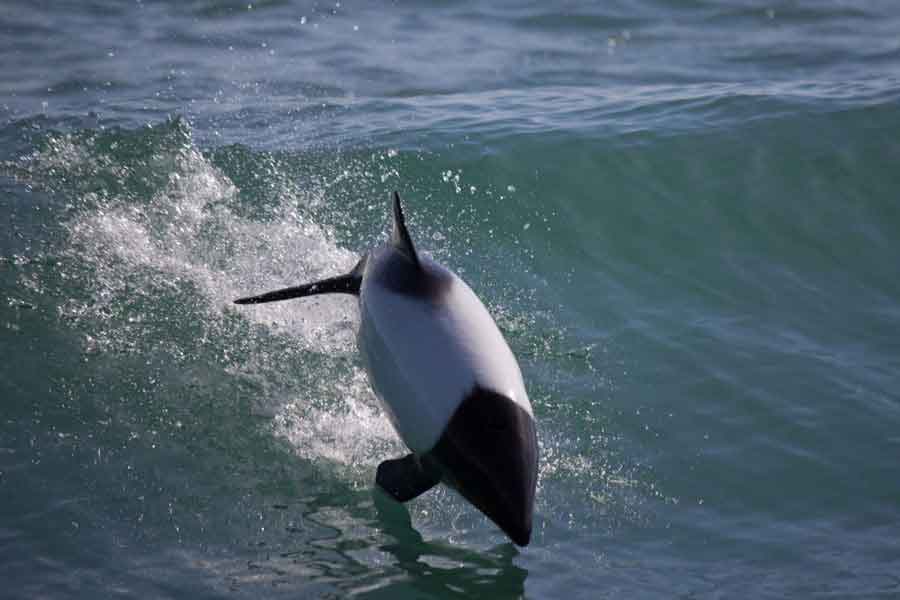
The Commerson’s dolphin, also known as the panda dolphin, is possibly one of the most striking and beautiful dolphins that inhabit the sea. Its body is small (1.35 meters) and it can weigh up to fifty kilograms. At birth, the calves weigh only 6 kilograms and have grayish spots that become whiter as the animal reaches adulthood. They are usually found near the coast in groups of three individuals, but in open ocean areas, aggregations of up to one hundred individuals have been observed.
It has a very limited global distribution, as only two populations are known. One is found in South America, south of Argentina and Chile, and the other is found on Kerguelen Island in the Indian Ocean. Today, it is very scarce in southern Chile, as in the 1970s it was hunted for its meat to be used as bait in crab fishing.
It is relatively easy to identify males from females by the black spot on the underside of their bodies. In males, the spot has a drop-like shape, while in females, it has a horseshoe shape. Scientists from the Cethus Foundation (www.cethus.org) have developed a photo-identification system that allows for the identification of one individual from another based on the distribution of their spots. This way, Commerson’s dolphins can be individually recognized, and practical monitoring can be conducted to study their individual behavior. It has been established that some dolphins are residents in a particular area, while others are in transit. For example, a female named Cande has had four calves since 1996. The individual in the photograph was named «Ali» by the scientists.
These studies have led to a full awareness of the problems faced by these visually striking dolphins. As a result, on July 24 of this year, they were protected by law and declared a Natural Heritage of the Province of Santa Cruz, Argentina. The greatest problem they face today is fishing nets. As they cannot detect them, they become trapped and drown. To address this issue, an experiment is being conducted in collaboration with local fishermen to place metal discs in the nets, allowing the dolphins to detect and avoid them. This is an example that demonstrates how humans can share the sea with other animals without exterminating them.
«One cannot defend what one does not love, and one cannot love what one does not know.»

